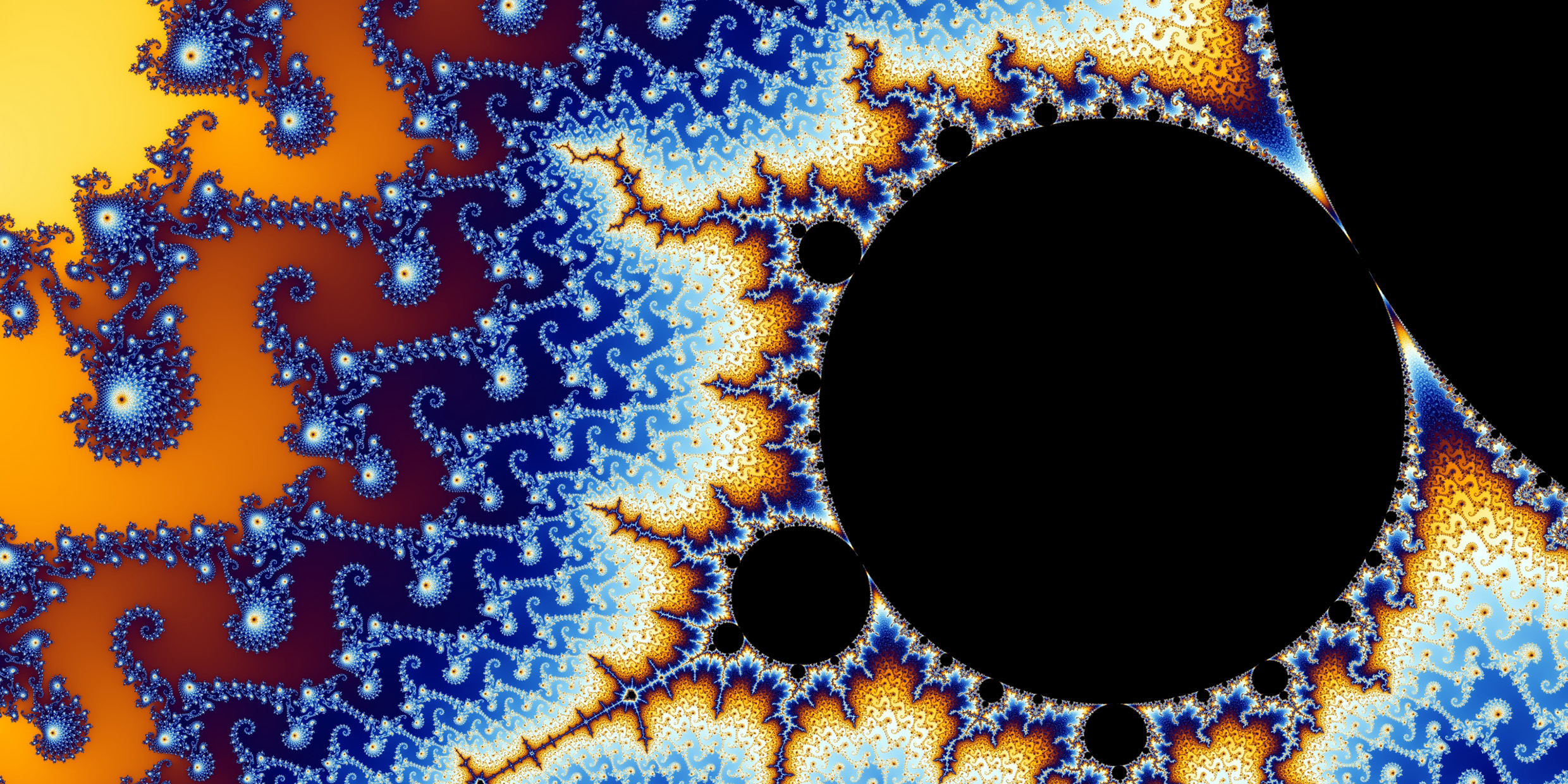Originally published 27 July 1992
For the jacket of my collection of science essays, the publisher proposed a representation of the Mandelbrot set, a computer-generated mathematical pattern of wonderful complexity, one of a family of patterns called fractals.
“But there’s not a single word about fractals in this book,” I protested.
“Never mind,” he said. “It’s the hottest graphic image in science today.”
The hottest graphic image? What’s going on here? Are science essays a pop commodity, to be packaged like a rock video? Is mathematics now a matter of fashion?
You bet! And nothing is more fashionable than the Mandelbrot set.
It has been called the most complicated object in mathematics, but in another sense, it is exceedingly simple. It is certainly one of the most beautiful objects in mathematics, and one of the most philosophically provocative. It was discovered in 1979 by the iconoclastic genius Benoit Mandelbrot.
Bear with me on the next paragraph; there is light at the end of the tunnel.
The Mandelbrot set is the collection of all complex numbers that behave in a certain way. A complex number has a real and an imaginary part (the imaginary part is a real number multiplied by the square root of minus one). Here’s how to decide if a number is in the set: Take a complex number, square it, add the original number, square the result, add the original number again, square the result, and so on, over and over; if the result remains finite (doesn’t become infinitely large), then the original number is in the Mandelbrot set; if the result becomes infinitely large, then the original number doesn’t qualify.
What could be simpler than that? This is the kind of calculation that needs a computer. In fact, the Mandelbrot set could never have revealed its wonders until high-speed computers came along.
When the numbers in the Mandelbrot set are plotted on a two-dimensional graph, extraordinary patterns emerge — swirls, flourishes, and filigrees of luxurious complexity. When these are displayed in color on a computer screen they are exquisitely beautiful.
But can beauty alone explain why these patterns have become a pop phenomena? Why do people with no interest in mathematics go ga-ga over fractals? The answer, my friends, is blowing in the wind.
Literally.
No other kind of mathematics so perfectly mimics the antics of the wind as fractals. In the details of the Mandelbrot set are eddies, streams, and vortices. Here are big whorls with little whorls upon them, and yet smaller whorls upon those — global circulation patterns, hurricanes, whirlwinds, dust devils. Deeper inspection of the set yields ever more details — smaller patterns similar to the larger patterns, and yet different, receding into infinity, like those marvelous photographs of cyclones in the atmosphere of Jupiter sent back by the Voyager spacecraft.
And it is not just the winds that fractals resemble, but tumbling brooks, flowers, ferns, leafy trees, and the circulation of the blood. It is the organicity of the Mandelbrot set that accounts for its popularity, the way in which it combines simplicity with infinite variation. The Mandelbrot set taps into a fundamental human ambivalence — our desire for order and our fear of fixity.
Science has been wonderfully successful at satisfying our need for order. It has sought to reduce all of nature to a few fixed, invariable laws. Its method is to know by isolation, by reduction to unseen particulars. The fundamental metaphor of science is the lab bench — a stark, clean, impermeable surface upon which one part of the world can be disconnected from all the rest.
But something in our spirit rebels against too much reductionism. We are convinced in our heart of hearts that the universe is an organic unity, and, as Goethe said, that dissection destroys the very thing we wish to know. We thrive on the stability of law, but we relish spontaneity and surprise. Thus, our culture’s love-hate relationship with science.
The Mandelbrot set is a powerful public metaphor for a new kind of science, at once mathematical and organic. It remains to be seen whether the explanatory power of fractals can replace the sort of science we have enjoyed since Newton. Certainly, fractals have their prophets and champions, but so far the hoopla and public enthusiasm has outstripped solid scientific achievement.
Fractals, such as the Mandelbrot set, make wonderful computer games; it’s less clear that these pretty patterns can replace the science that has served us so well for 300 years.
In the introduction to his textbook on fractal mathematics, Michael Barnsley says, “[Fractals] will make you see everything differently. There is a danger in reading further. You risk loss of your childhood vision of clouds, forests, galaxies, leaves, feathers, flowers, rocks, mountains, torrents of water, carpets, bricks, and much else besides.”
He’s got the right idea, but he stated it backwards. What is so popularly appealing about fractals is that they recapture something of our childhood vision of a world that is playful, visually appealing, and organically whole, precisely the attributes we do not find in the science we learned in school.



